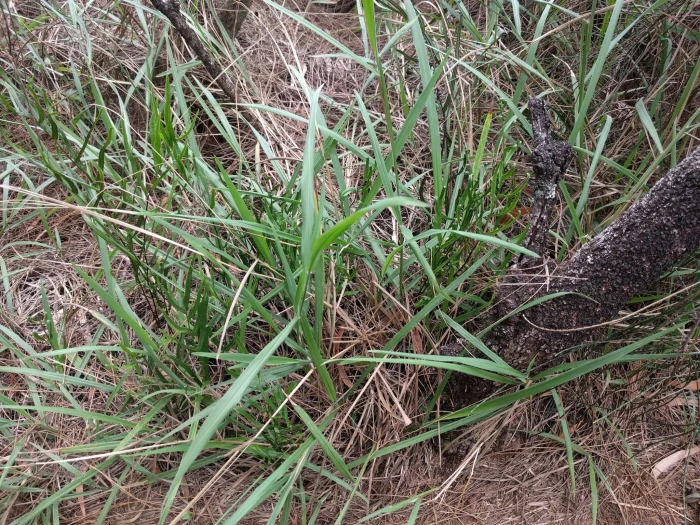Crowngrass
(Paspalum pilosum)
Crowngrass (Paspalum pilosum)
/
/

© Kevin Faccenda
CC BY 4.0
Image By:
© Kevin Faccenda
Recorded By:
Copyright:
CC BY 4.0
Copyright Notice:
Photo by: © Kevin Faccenda | License Type: CC BY 4.0 | License URL: http://creativecommons.org/licenses/by/4.0/ | Uploader: kevinfaccenda | Publisher: iNaturalist |

























Estimated Native Range
Climate Requirements for Martha Lake, Washington
| This Plant | Your Site | Plant Suitability for Your Location | ||
|---|---|---|---|---|
| • Precipitation | 69" - 102" | 43" | Aquatic | Aquatic |
| • High Temp. | 80°F - 90°F | 75°F | Your summer temperatures are normal for this plant. | Excellent |
| • Low Temp. | 50°F - 70°F | 34°F | Your winter temperatures may be too cold for this plant | Too cold |
This plant should grow well at your location with about N inches per year (Y minutes per month) of irrigation.
Summary
Paspalum pilosum, commonly known as Crowngrass, Hairy Paspalum, or Hairy Sandgrass, is a perennial grass that thrives in a variety of moist habitats, including wet meadows, marshes, and the edges of water bodies such as streams and ponds. It is native to a broad region that encompasses the United States, Mexico, and parts of Central and South America. This grass typically reaches a height of 1.5-3 feet (0.46-0.9 meters) and spreads 0.5-1 feet (0.2-0.3 meters) wide, forming tufted clumps with a moderate growth rate. The leaves are notable for their hairy texture, which can help with water retention. Paspalum pilosum produces yellow, inconspicuous flowers during the summer, which are not particularly showy but serve an ecological role by providing forage for wildlife.
Crowngrass is valued for its ability to stabilize soil and prevent erosion, especially in wet areas. It is often used in restoration projects, as ground cover in moist garden areas, and for erosion control along waterways. It is adaptable to various soil types, including clay, loam, and sandy soils, and prefers medium to high moisture levels. While it does best in full sun or part shade, it is also tolerant of a range of light conditions. Gardeners should be aware that in ideal conditions, Paspalum pilosum can spread vigorously and may require management to keep it within bounds. It is generally free from major diseases but can be susceptible to rust in some conditions.CC BY-SA 4.0
Crowngrass is valued for its ability to stabilize soil and prevent erosion, especially in wet areas. It is often used in restoration projects, as ground cover in moist garden areas, and for erosion control along waterways. It is adaptable to various soil types, including clay, loam, and sandy soils, and prefers medium to high moisture levels. While it does best in full sun or part shade, it is also tolerant of a range of light conditions. Gardeners should be aware that in ideal conditions, Paspalum pilosum can spread vigorously and may require management to keep it within bounds. It is generally free from major diseases but can be susceptible to rust in some conditions.CC BY-SA 4.0
Plant Description
- Plant Type: Grass
- Height: 1.5-3 feet
- Width: 0.5-1 feet
- Growth Rate: Moderate
- Flower Color: N/A
- Flowering Season: Summer
- Leaf Retention: Evergreen
Growth Requirements
- Sun: Full Sun, Part Shade
- Water: Medium, High
- Drainage: Medium, Slow
Common Uses
Erosion Control, Low Maintenance, Water Garden
Natural Habitat
Native to wet meadows, marshes, and edges of water bodies in the United States, Mexico, and parts of Central and South America
Other Names
Common Names: Hairy Paspalum, Hairy Sandgrass
Scientific Names: Paspalum pilosum, Dimorphostachys pilosa, Panicum monostachyum, Panicum monostachyum, Paspalum monostachyum, Paspalum monostachyum, Paspalum monostachyum, Paspalum peregrinum, Paspalum venezuelanum
GBIF Accepted Name: Paspalum pilosum